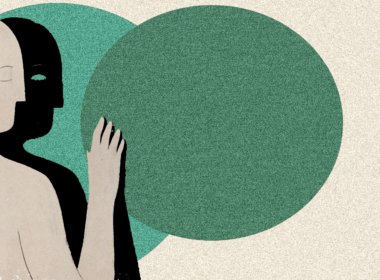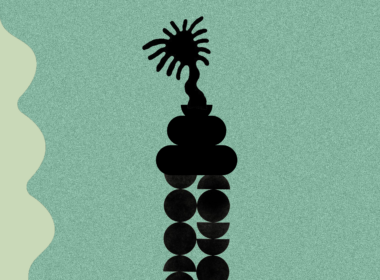What are Kegels?
Pronunciation: Kay-gulls or key-gulls. Often described as an exercise for the pelvic floor, Kegels have become the hottest topic over the past couple of years amongst women and vulva owners. So put on your leg warmers and sweatband, and let’s talk about pelvic floor exercise.
Kegels, invented in 1948 by American gynecologist Dr. Arnold Kegel, “can strengthen pelvic muscles, support pelvic organs, and help control incontinence of urine, bowels, and gas. While there’s little scientific evidence to prove it, some doctors believe [the exercise] also has potential to make sex more pleasurable.” When you are doing a kegel, you are consciously contracting your pelvic floor muscles to strengthen them and gain more control over them – similar to working out or strengthening any other muscle in your body.
Kegels are often prescribed by a pelvic floor specialist or healthcare provider (HCP) as a course of treatment for individuals experiencing urinary or fecal incontinence (the inability to control urination or defecation) or pelvic organ prolapse (“unsupported pelvic organs, like your uterus, rectum, and bladder bulging into your vagina or causing a protrusion from the opening of your vagina”), and as a way to encourage postpartum healing. There is no scientific evidence that they will increase the quantity or quality of orgasms, but some say that this is their experience, and word-of-mouth marketing tends to take on a life of its own, baked in truth.
Honestly, when I first heard about Kegels, I assumed they were just another oppressive tool of the patriarchy made to make vaginas tighter, but Kegels aren’t a wives’ tale – they are backed by science. According to a 2007 study by, the study group “undergoing supervised Kegel exercises showed better outcomes of pelvic floor function, including improvement of quality of life, decreasing urine leakage, and higher satisfaction rate.” A 2010 study concluded: “that normal females experienced remarkable improvement in sexual arousal after only a week of Kegel exercises.” Other studies showed improved pelvic floor muscle strength and sexual function and improved satisfaction regarding orgasm and arousal in postmenopausal women.
The Importance of the Pelvic Floor
Experts say that “the maintenance of continence and prevention of pelvic organ prolapse rely on the support mechanisms of the pelvic floor.” The pelvis consists of your two hip bones, which are connected by the sacrum (butt bone) and pubic bone. In the pelvis, there are two ‘basins’ – the female pelvis is rounder and wider allowing more easily for childbirth, but in fact, this widening of the pelvis predisposes females to pelvic floor weakness.
The pelvic floor consists of ligaments and fascia, but basically, the pelvic floor muscles are like two hammocks in a ‘plus sign’ formation. These hammocks support your reproductive organs – the “hammocks” goes from the front of the pelvis to the tailbone, and also from side to side. If the hammocks are too loose or droopy, you might touch the ground or fall out, pelvic floor muscles aren’t that different.
Pelvic Floor Problems
Pelvic floor muscle problems can exist on two ends of the spectrum – they can either be too tight (or contracted) or too weak. Weakness can be caused by injury, trauma, childbirth, overuse or stress, hormonal changes like menopause, aging, or diabetes. Some of the most common pelvic floor disorders are vaginismus, stress urinary incontinence, fecal incontinence, and pelvic organ prolapse. While incontinence and pelvic organ prolapse may be more well known, vaginismus is “characterized by muscle spasms that can make penetration through sex, a gynecological exam, or even inserting a tampon incredibly painful.”
Pelvic Floor Physical Therapy
Pelvic floor therapy is similar to any other type of physical therapy, but “is performed in an intimate, private, and calming room.” It’s more like physical therapy meets spa… but for your vagina and pelvis. Your physical therapist will do a consultation and a health assessment, conduct a musculoskeletal exam, do an internal vaginal exam, and then discuss a treatment plan with you. Symptoms that might suggest you should consider Pelvic Floor Therapy include:
- Pain during sex, vaginal exams, or when using a tampon
- Painful bowel movements or urination
- Urine leakage when coughing, sneezing or laughing
- Prolapse of the pelvic floor organs
- Frequent urination
- Hip pain or other orthopedic issues
- Chronic lower abdominal pain
- Healing postpartum
Kegels in Action
Kegels work to strengthen and tone pelvic floor muscles and also increase blood circulation to the pelvic floor and vagina. This increase in blood flow may encourage arousal and lubrication, while increased muscle control contributes to controlling incontinence and can increase overall sensation. Even if the effects aren’t physical and instead are psychological, Kegels “can help women feel better about their pelvic floor.”
How to Kegel
The most difficult aspect of doing Kegels is identifying the muscles that you are meant to engage. These muscles are the ones that stop and/or slow urination. Once you have identified the muscles, the “number of contractions, duration of holding time, and sets vary.”
There are two types of contractions – fast contractions (quick contraction and relaxation of the pelvic floor muscles) and slow contractions (long periods of contraction with shorter periods of relaxation between). Fast contractions “train the pelvic floor muscles to adapt to the increased intra-abdominal pressure during coughing and laughing” while slow contractions “help with muscle strengthening.”
If you do Kegels regularly as prescribed by your HCP or pelvic floor specialist, you can see results in a few weeks or months and for continued benefits, you must continue to practice the exercises.
Kaution: Kegels
It’s imperative to know that Kegels are not beneficial for everyone. Many women do them incorrectly and this can exacerbate the problems they had in the first place. Below are some warnings by experts:
- “Once you learn how to do them, do not practice Kegel exercises at the same time you are urinating more than twice a month. Doing the exercises while you are urinating can weaken your pelvic floor muscles over time or cause damage to bladder and kidneys.”
- “In women, doing Kegel exercises incorrectly or with too much force may cause vaginal muscles to tighten too much. This can cause pain during sexual intercourse.
- “Incontinence will return if you stop doing these exercises. Once you start doing them, you may need to do them for the rest of your life.”
- “It may take several months for your incontinence to lessen once you start doing these exercises.”
- “Call your health care provider if you are not sure you are doing Kegel exercises the right way. Your provider can check to see if you are doing them correctly. You may be referred to a physical therapist who specializes in pelvic floor exercises.”
Myth Busting: Kegel Edition
Q: Do Kegels make your vagina tighter?
Firstly, vaginal tightness has a lot of myths surrounding it. The largest myth is that the vagina becomes looser with more sexual partners – as if it were the scrunchie you have been using since grade school. This is not true! Unfortunately, with this myth comes the idealization of a “tight” vagina, and a loose vagina which is rooted in misogyny, sexism, heterosexism, ableism, and cis-sexism.
After childbirth where your pelvic floor muscles stretch, the vagina will likely feel ‘loose’ for a few days, but the natural elasticity of the vagina will allow it to “return to its normal state,” says Dr. Amanda Olson, DPT, PRPC, “though you may have to do a few exercises to help it along.” Dr. Olson continues to mention, “After delivering multiple children, the vagina’s elasticity breaks down a bit, and so each subsequent delivery can make your vagina a little looser, however, there are still exercises you can do to combat or reverse this problem, so don’t worry!”
Kegels strengthen and tone the pelvic floor muscles, which might make you feel ‘tighter.’ Remember that no matter what, you and your vagina, are perfect the way they are and you have the right to make decisions about it.
Q: Are they just for women and people with vaginas?
No, because sex assigned at birth doesn’t change the fact that we all have pelvic floor muscles that contribute to our pelvic health. Men and people with penises might benefit from Kegel exercises if they have urinary or fecal incontinence or leak after urination. There are also devices to help men and people with penises do Kegels.
Q: Should you do Kegels as much as you can, anywhere you can?
You should do the amount of Kegels that your HCP/PT has prescribed you and do them in an environment where you can focus.
Q: Are Kegels preventative?
Yes! Kegels can prevent the onset of certain conditions. Talk to an HCP before starting Kegels.
Tools for Kegel Exercises and Pelvic Floor Strengthening
The two primary tools that aid in kegel exercises are kegel weights and biofeedback. Specially designed weights are placed in the vagina and promote the engagement of the correct muscles. Biofeedback is provided by placing a sensor in the vagina and measuring pelvic floor activity.
Here are a few options for kegel helpers…
- Esmerelda Eso Es Eve Weighted Kegel Balls & Pleasure Egg ($77): this set of three (plus a remote) allows you to do kegel training and have some vibrator fun too! This set comes with two weights and one Bluetooth-controlled vibrator.
- Dr. Sherry’s She-ology Interchangeable Kegel Set ($57): this kit is excellent for customization as the weights are interchangeable.
- Steele Kegel Balls ($19): these are best for more advanced users as they are small but heavy and the goal is to use pelvic floor muscles to keep the balls in the vagina. They should not be worn during vaginal intercourse and should never be inserted anally.
- Elvie Kegel Trainer ($199): this device allows you to get biofeedback in your home; it connects to an app on your phone, measures contractions, monitors your technique, has programmed exercises, and is like a pelvic floor personal trainer.

Written by:
Gillian ‘Gigi’ Singer, MPH
American Board Certified Sexologist, Sexuality Educator, and Sex Ed Content Specialist





![The Drop by Rythm. 10 Best Sex toys for Women [For Beginners] by Gillian Gigi Singer. Sexual Wellness.](https://blog.itsrythm.com/wp-content/uploads/2022/07/The-10-Best-Sex-Toys-for-Women-Who-are-Beginners--768x423.jpg)

